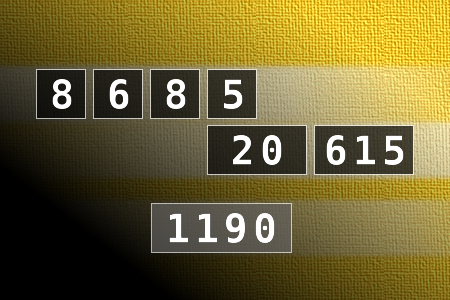Calculate the number 1190
NUMBERMANIA: Calculate the number 1190 using numbers [8, 6, 8, 5, 20, 615] and basic arithmetic operations (+, -, *, /). Each of the numbers can be used only once.Correct answers: 10
The first user who solved this task is Nílton Corrêa de Sousa.
#brainteasers #math #numbermania


